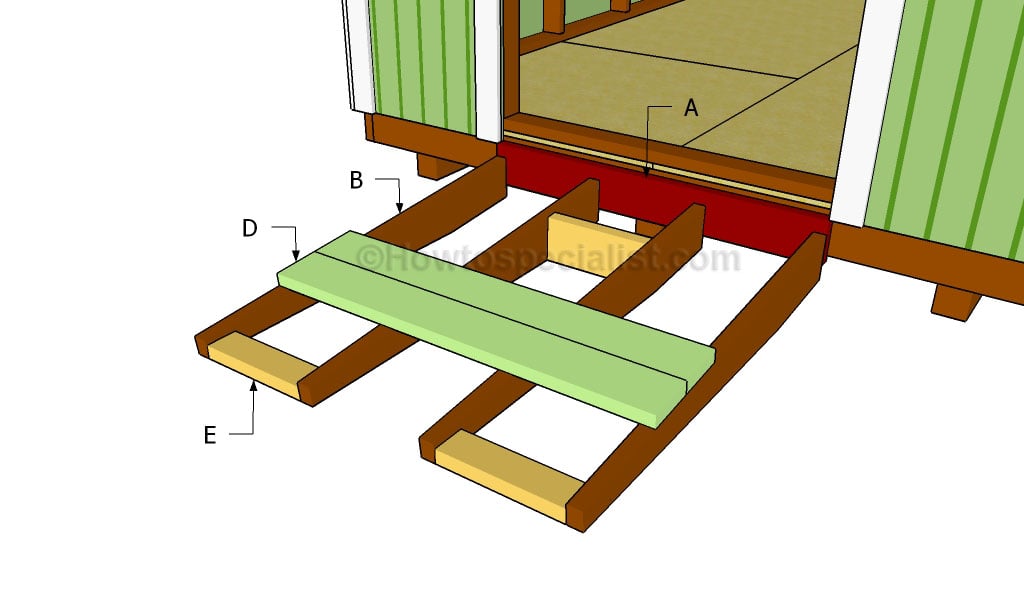When you start building backyard structures like a shed, it’s easy to forget ease of access until it’s time to load up something heavy into your shed, especially after a long day of yard work. Adding a shed ramp can help prevent the possible backaches and make access easier. Whether you’re using the shed for storage, as a workshop, or a playhouse for your kids, a safe rolling access can be incredibly helpful.
While you could buy a manufactured ramp, you’d probably need to set the ramp for each use. Instead, why not build your own shed tramp? All you need is a flat supported plane that travels at a shallow angle from the ground to the top of your doorsill. With the right equipment, even a carpentry beginner can make a safe, attractive shed ramp in less than a single afternoon.
Getting Started
To make your ramp stable, it’s important to understand the physics of the ramp. This is more than just a piece of plywood laid over the gap between door and ground, the ramp needs to attach firmly to the shed just below the door frame and rest securely on the ground at the other end. Once stabilized, you can line up the supporting joists and lay the ramp boards. Make sure to get pressure treated boards to ensure that every step by a friend or family member and every rolling heavy thing is well-supported. Built correctly, your shed will be doubly accessible and safe to enter.

What You’ll Need:
- Supports (A) – doorway-end stabilizing board
- Joists (B) – Supporting cross-boards that connect the Support and Blockings
- Ramp Boards (D) – boards you walk on laid across the joists
- Blockings (E) – ground-end stabilizing board
You will also need:
- Safety Gear – Gloves and Safety Goggles
- Carpentry Equipment – Metal Supports, Deck Screws, Chalk, Measuring Tape, Level, Pencil
- Power Tools – Miter Saw or Jigsaw, Power Drill, and Drill Bits
Building the Backyard Shed Ramp
With all your materials and tools gathered, you’re ready to start building. Fit the support board to the doorframe, you may need to cut it to the right size. Make sure it’s level and secure it with galvanized deck screws.
Decide on your ramp angle and cut the joist boards. They will need to both support at an angle and lie flat on the ground.
Line them up with the support and flatten them where the corner would ‘go into the ground’ in order to maintain the angled surface. Secure the joists to the Support board with the metal supports. This is the most important part because if the joists fall, so too will your ramp.
Cut and secure the blocking to between the ‘feet’ of your joists. This will stabilize them and prevent them from wiggling.
You will also want a blocking in the middle, 6 inches to a foot out from the support board to stabilize the center of your ramp.
Finally, you’re ready for the deck boards. Make sure they lay evenly and completely over the joists before securing.
Once you’ve screwed everything in, you should now be the proud owner of a brand new and perfectly safe shed ramp. With the structure complete, you have the choice to paint it, lay down a layer of thick traction tape, or leave the next step for another day. Practicing at-home carpentry is a great way to personalize your home and save on repair costs.











Leave a Reply